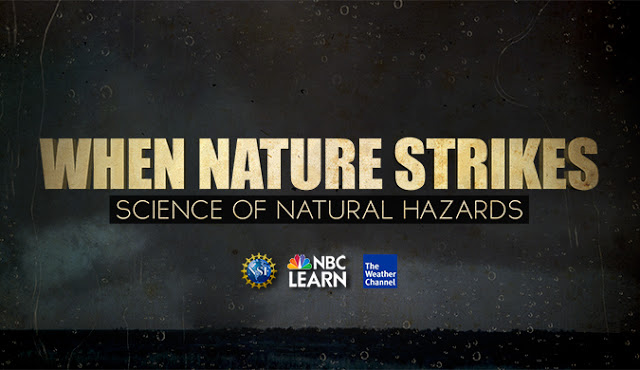Two University of Washington scientists are featured in a new series — created by the National Science Foundation, NBC Learn and The Weather Channel — that focuses on natural hazards. Each of the short videos features an NSF-supported scientist who studies one of ten types of natural disasters. Two of them are from the UW’s Department of Earth & Space Sciences.
David Montgomery, a UW professor of Earth and space sciences, studies past and present landslides to try to understand their ultimate cause. In the episode on landslides, Montgomery talks about landslide activity in Oso, Washington and at Carbon Glacier near Mount Rainier. He also looks at what aerial surveys suggest about risks at the Oso site, which in March 2014 gave way to become the deadliest landslide in U.S. history.
John Vidale, a UW professor of Earth and space sciences, and his team at the UW-based Pacific Northwest Seismic Network are monitoring ground motion across Washington and Oregon. He also leads a UW M9 Project to prepare for one of the most powerful natural hazards on the planet — a magnitude-9 “megathrust” earthquake. In the episode on earthquakes, Vidale talks about the 2001 Nisqually earthquake and travels into the field to seismic monitoring stations in West Seattle and downtown Seattle.
“When Nature Strikes: Science of Natural Hazards” was produced by NBC Learn in partnership with the National Science Foundation. Other segments focus on such events as hurricanes, wildfires, volcanoes and space weather. The series is narrated by The Weather Channel host Marshall Shepherd, a professor at the University of Georgia. The segments will air on The Weather Channel and NBC affiliate stations, and are all now available online.
Montgomery and Vidale will also both speak this fall during the College of the Environment’s annual lecture series. This year’s theme is “Surviving Disaster: Natural Hazards & Resilient Communities.” Register online for the free talks, which begin Tuesday, Oct. 13, with Montgomery’s presentation on landslides.
Video
Landslides occur when material like debris, rock, and soil become dislodged from the earth and slide downward at speeds that can approach 100 miles per hour. David Montgomery at the University of Washington studies past and present landslides to try to understand what causes them. “When Nature Strikes” is produced by NBC Learn in partnership with the National Science Foundation.
Note: The above post is reprinted from materials provided by University of Washington.











